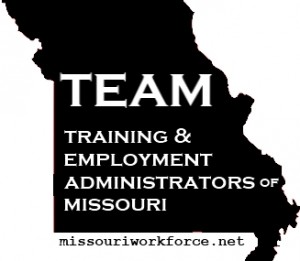 Certified Work Ready Communities (CWRC) in Missouri is a voluntary initiative guided by key community leaders (local elected officials, economic development, business leaders, chambers, educators, and workforce development). Whether a town is large or small, the community will be able to attract, retain, and develop a workforce with the education and foundational skills to succeed in the 21st century by utilizing the National Career Readiness Certificate (NCRC).
Certified Work Ready Communities (CWRC) in Missouri is a voluntary initiative guided by key community leaders (local elected officials, economic development, business leaders, chambers, educators, and workforce development). Whether a town is large or small, the community will be able to attract, retain, and develop a workforce with the education and foundational skills to succeed in the 21st century by utilizing the National Career Readiness Certificate (NCRC).
By strengthening the local workforce your community can prosper and grow together. A certified Work Ready Community means a local county has job candidates in the pipeline with high-demand skills proved by the National Career Readiness Certificate. It also shows that local employers care about hiring the best and brightest your region has to offer.
CWRC got its official launch at the Missouri Governors Conference on Economic Development that concluded today in St. Louis. The opening session of the conference featured a panel discussion featuring statewide business leaders. One of the breakout sessions provided detailed information on launching CWRC in local areas. Gov. Nixon referenced CWRC in his remarks to the conference on Friday.
Missouri’s statewide Workforce Investment Board (MoWIB) officially endorsed the CWRC and NCRC. Chairman Keith Gary provided information on MoWIB’s role in accepting recommendations and making the designation approvals as part of the CWRC process.
Michael Holmes and Jasen Jones represented TEAM as ex-officio members of the DWD’s statewide CWRC leadership team. As local workforce development is a required local partner for each county’s entry into CWRC, local WIBs and one-stop career centers have an important role in this initiative. The partnerships of WIBs and one-stop centers, in collaboration with local colleges and tech-ed centers, provide the key delivery system for NCRCs in Missouri.
A wealth of information on CWRC, including the application and help in getting started, may be found online on the official CWRC website. A printer-friendly brochure may be downloaded as well.




